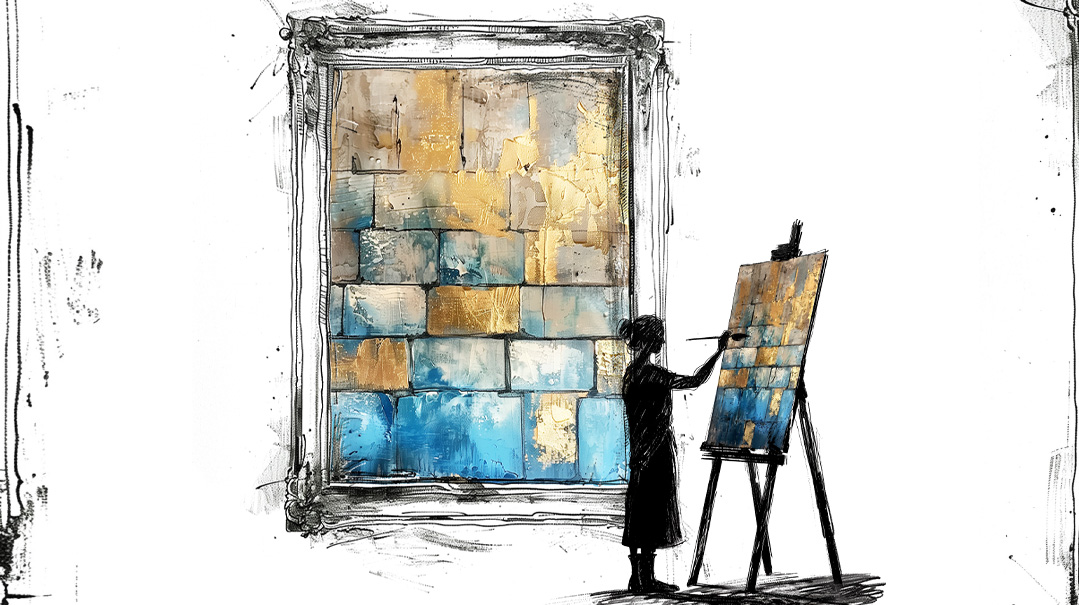Artistic License

Artists observe the world around them — and then bring those observations to life on their canvas. All art must be inspired by something — but when does that inspiration cross the line into theft? Artists and experts get real about plagiarism hitting the palette

Chani Judowitz’s painting has become iconic of the unity Klal Yisrael felt after October 7. You’ve probably seen it — an IDF soldier hugs a chareidi man with flowing peyos and a tall black yarmulke. The painting feels suffused with light and hope; the gold leaf highlights seem to offer hope of brighter times to come.
The painting was inspired by a video, posted on Living Lchaim, in which the camera follows one soldier as he hugs some chareidi men operating food stations at what seems to be an army base. After watching the video, Chani says she couldn’t stop thinking about it, particularly one frame where two men hug.
Although the frame she focused on wasn’t a clear shot, it was enough for her. She felt compelled to paint it, and describes the ensuing creativity it fostered, “pure inspiration,” that came straight from the heart.
“It didn’t take long to paint,” Chani says. “I saw it on Friday, painted it on Motzaei Shabbos, and finished it Sunday morning.”
After posting it a few hours later, it went viral, and by the end of the day, the painting had sold. She’d also made some prints available for purchase, and contributed half of the profits to tzedakah.
Several weeks later, someone messaged Chani, saying they had spotted her painting on a WhatsApp status. Intrigued, Chani asked for and received a screenshot of the video, where she was able to see her painting in the background, hanging on a wall.
Looking at it closely, she could see gold leaf, which told her she was looking at an original, and not a print, yet something about it felt off. She had sold some semi-originals, but this didn’t seem to be one of those editions. She was sure that while this painting looked identical to the one she painted, it wasn’t hers.
“The hair was slightly different, the colors on the elbow. It was a very close copy, but not it,” Chani says.
She decided to contact the man in the screenshot and ask him where he got the painting. After speaking to him, she learned his wife had seen Chani’s painting online, and painted a copy for herself. She told Chani that people had seen the painting at their home and were reaching out, expressing interest in copies of the painting.
Chani explained to her that she had copied an original artwork. The couple expressed remorse and asked what they could do to make things right. While she normally would not have agreed, in this situation, Chani allowed them to keep the painting, as long as they credited her. The couple also credited her on IG and added links to Chani’s website.
Oops! We could not locate your form.







